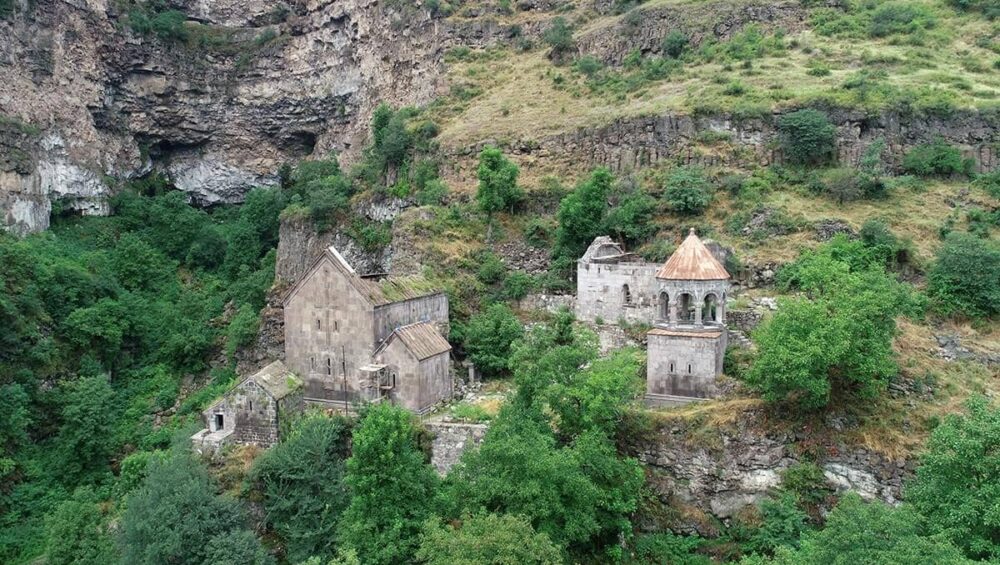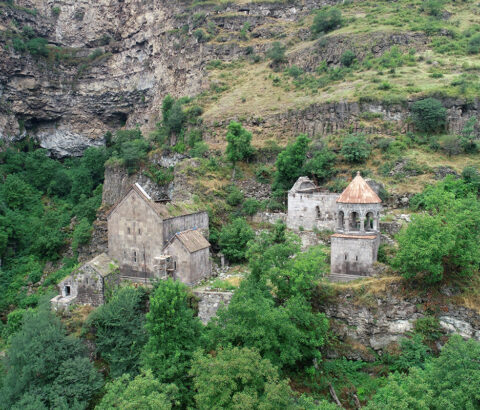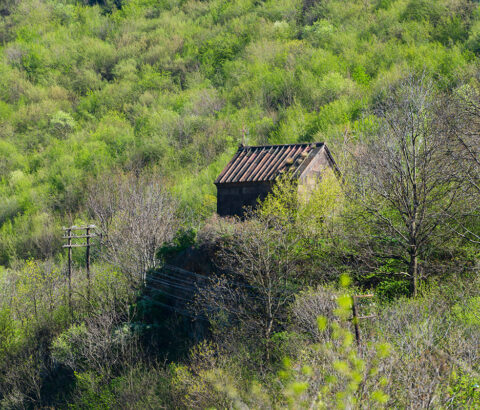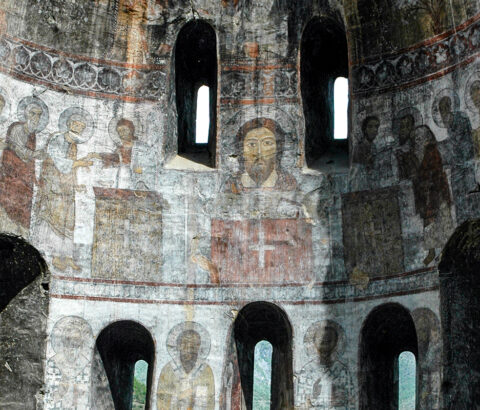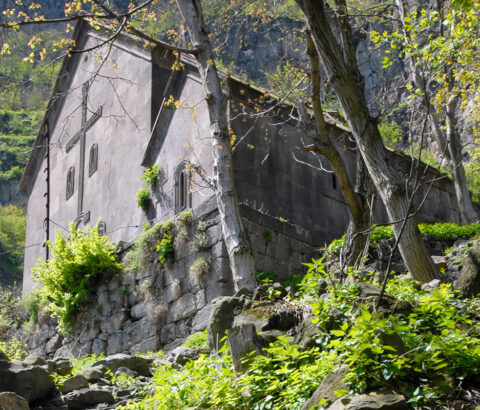Nestled atop a cliff on the western slope of the Debed canyon, just across the road from the town of Tumanyan, the 12th century monastic complex of Kobayr is famous for its mesmerizing frescoes. The monastery was an important center of education, culture, and writing in medieval Armenia, the history of which was intertwined with the activities of such royal and aristocratic dynasties as the Bagratunis, the Kiurikians, and the Zakarians.
There are several caverns around the site that were used as monastic cells, and the name of the monastery is believed to be a combination of the Georgian word “kob” and the Armenian word “ayr,” both of which mean “cave.” Another version of the name’s origin states that the monastery was often the apple of discord between different powers, and from time to time, while quarreling over who the monastery belongs to, the sides would ask a question: “Is this your castle (“qo berd” in Armenian)?” This is why locals also call the monastery Kober.
 Quick Info
Quick Info
What's Nearby
Kobayr was founded as a priory in 1171 by Mariam, the daughter of King Kiurike II of the Kingdom of Lori. The expansion of the monastic complex began in the end of 12th-beginning of 13th cc, when Kobayr was acquired by the Zakarian noble family loyal to the Georgian court. The Zakarians converted the monastery to Chalcedonian faith, a Christian doctrine that was followed by the Georgian church. It was during this time that most of the buildings of the complex were built, including the cathedral, the belfry-sepulcher, the refectory, the sacristy, and others. And this is the reason why, along with Armenian inscriptions on the walls, texts in Georgian are found here as well.
The Zakarians introduced a new architectural style, with elements commonly found in Georgian churches. One of the most notable changes was the addition of rich and exquisite frescoes which embellished the interiors, contrary to the more conservative and minimalist decoration of the interior of Armenian churches. The fresco on the apse above the altar of the main church, the Cathedral of Mother Mary, for example, depicts Madonna and baby Jesus with archangels on both sides, the scene of Eucharist, and figures of saints.
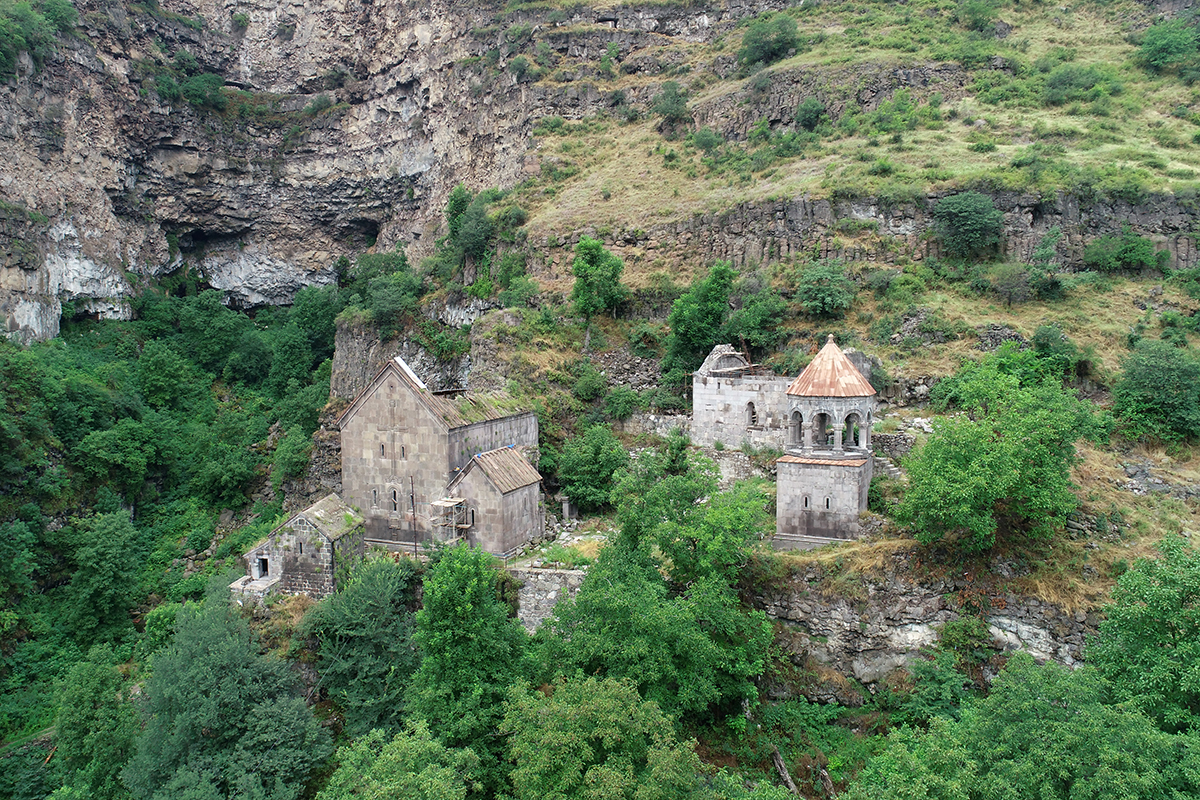
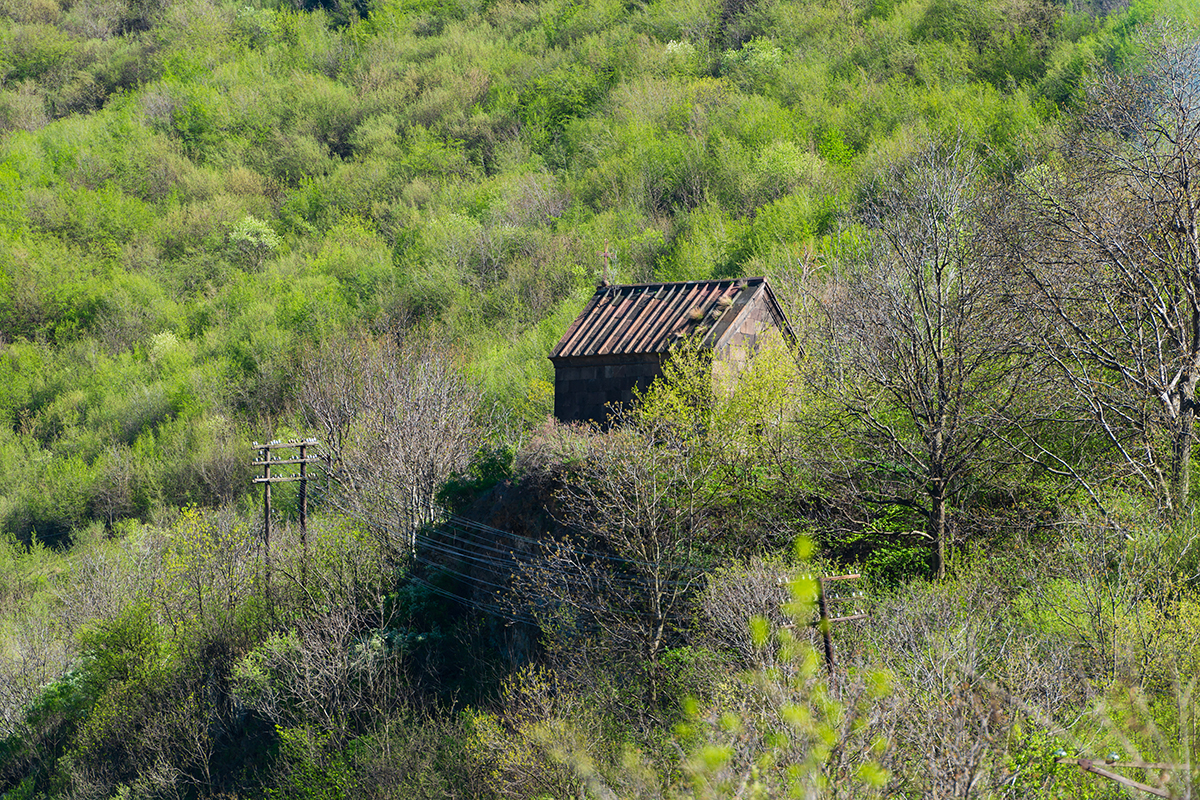
Standing next to the Cathedral of Mother Mary is the smaller church known as Mariamashen (meaning “built by Mariam”). An inscription at the entrance of this church states that it was built in 1171, so it is considered the oldest structure of the complex. Another notable structure of the Kobayr monastery is the belfry-sepulcher, dated back to 1279, representing a rare combination of a bell tower and a burial site.
Today, the monastic complex of Kobayr is accessible by foot only, via the village of Kober. The monastery is also the starting point of a popular hiking trail that runs along the slope of the canyon to the village of Odzun via another medieval monastery, Horomayr. If you’re looking for some breathtaking views of the Debed canyon, make sure to walk this trail, also available in the HikeArmenia app.

